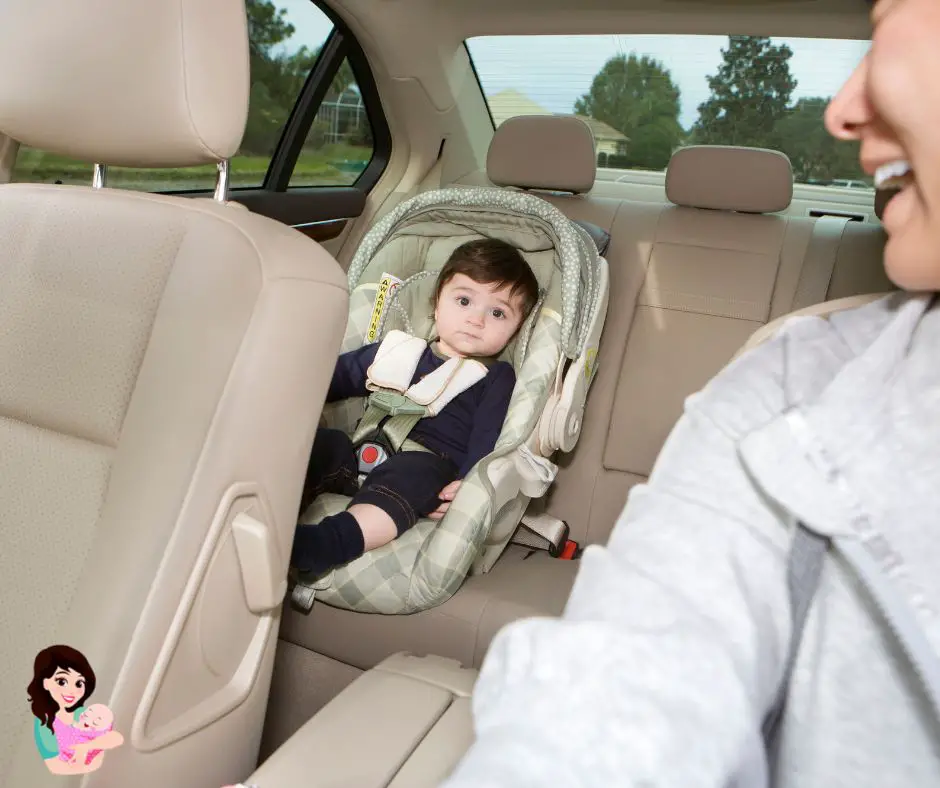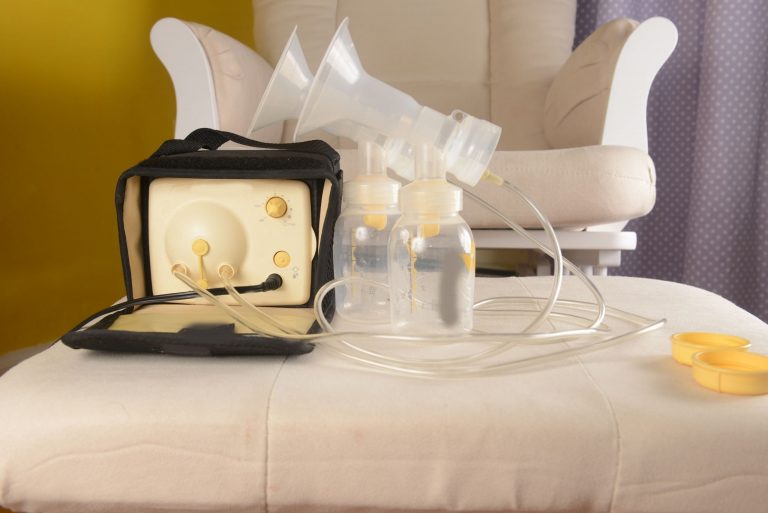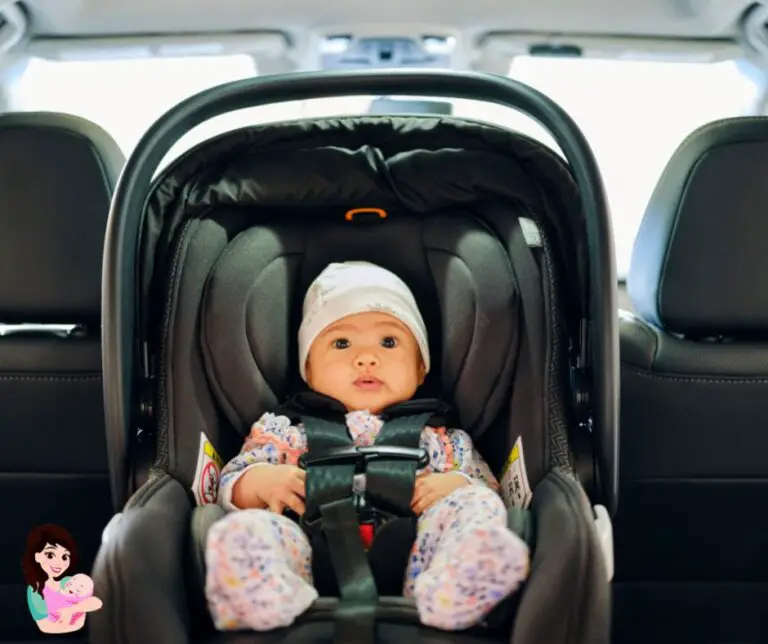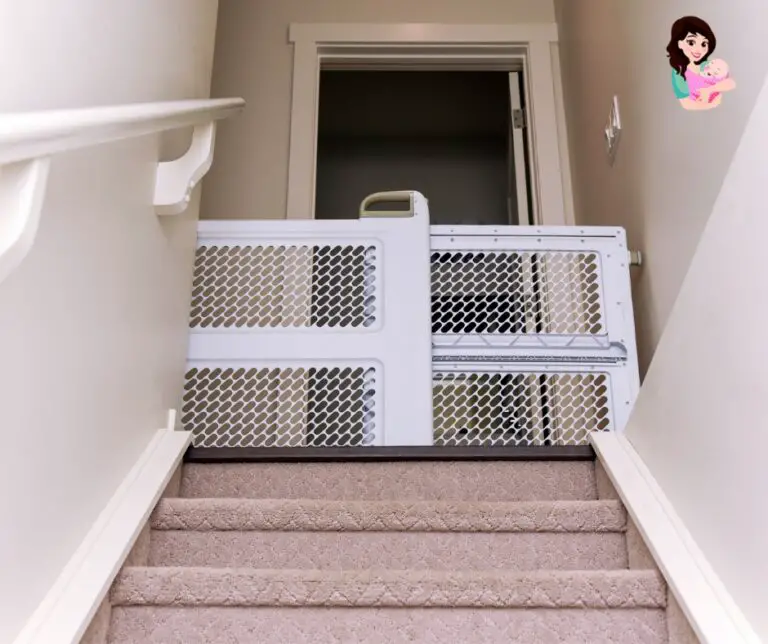
Before you install a forward-facing car seat in your vehicle, there are a few important things to know about how old your baby needs to be and how big they need to be before you can move them from a rearward-facing car seat.
Many parents are concerned and confused about when it is safe to upgrade their baby to a forward-facing car seat. It’s the kind of thing that seems like a simple solution, but it isn’t. There are many factors to consider, such as age, weight, and height, and if they have outgrown their current harness system before you can make a decision. But when exactly can a baby sit forward-facing in a car seat?
A baby can not sit forward facing in a car seat until the age of two or until they reach the top height or weight limit allowed by their car seat (for most models, this is 40 pounds). That’s because toddlers’ heads and necks are still very soft and pliable, making them more vulnerable to injury in a frontal collision.
The American Academy of Pediatrics recommends children remain rear-facing until at least two years old for maximum protection. Still, many parents keep their children rear-facing longer than this recommendation. If you are planning on keeping your child rear-facing longer than two years old, check with your pediatrician before switching your child into a forward-facing position.
Factors to Consider Before a Baby Can Sit Forward Facing in a Car Seat
1. Age
The American Academy of Pediatrics recommends that your child sits in a rear-facing seat until their second birthday. This is because the head, neck, and spine are not fully developed until then, making them vulnerable to injury from impact in a crash. Besides the physical safety benefits, it also encourages parent-child bonding and is easier on your back.
Age is also a factor, as a baby who weighs less than 20 pounds may need to be in a rear-facing seat longer. The weight limit for most rear-facing seats is 35 pounds, which means that if your baby weighs more than 20 pounds but less than 35 pounds, he should remain rear-facing until he reaches 35 pounds.
2. Weight
There are several weight limits to consider, but the most important and universal one is the maximum weight limit. Most seats have a maximum weight limit of 65 pounds; some go up to 85 pounds, though the average is around 40-50 pounds. If you’re looking for a seat for your newborn, you must find one with a minimum weight limit below 15 pounds because this ensures that your baby is safe in the car seat if they weigh less than 15 pounds at birth.
Most car seats have weight limits lower than their height or age limits. You should consult your manual to see your model’s weight limit. If it’s higher than your toddler’s recommended weight, you may be able to use it safely; just make sure that it fits well before you try it out on the road. Also, remember that as babies grow larger and heavier, they may exceed their car seat’s maximum weight capacity before reaching their height limit (although this isn’t usually an issue until they become teens).
3. Height
Height is the most important factor when determining if your child can sit forward facing in their car seat. The seat needs to be at least 1 inch below the child’s shoulders, and they should be able to sit with their back against the seat without slouching. If this is not possible, you should continue using a rear-facing car seat with a top rope (or other anchors) until your baby outgrows the height limit of that particular model.
4. Shoulder strap
When choosing a car seat, ensure you’re selecting one with shoulder straps that vertically adjusts, so they fit snuggly on your child’s shoulders. The straps should always be at or below your child’s shoulders and not above them when buckled into the seat. To ensure this is the case, adjust the shoulder straps to rest on top of the shoulders rather than behind them. This will provide extra protection against injury during an accident or sudden stop in traffic.
Why Are Rear-Facing Car Seats Safer for Children?
Rear-facing car seats are the safest option for infants and young children. As a parent, you may wonder why rear-facing car seats are safer than forward-facing ones.
Rear-facing seats protect your child’s head and neck in a crash by absorbing the impact forces that would otherwise be transmitted to your child’s head and neck. In a frontal collision, harness straps prevent your child from “telescoping” into the front seat back or through an open space between the vehicle’s seat back and cushion.
Children in their first three years have less developed bones and connective tissues, making them more susceptible to major injuries. In a major collision, rear-facing seats function as a protective cradle, especially for an infant or child’s delicate neck and spinal cord. They provide more protection for infants and young children, and age alone cannot tell whether a youngster is physically mature enough to sit safely in a front-facing seat.
Because of these safety features, rear-facing car seats are much safer than forward-facing ones. In fact, it’s best to keep children in rear-facing seats as long as possible, ideally until they reach age 2 or 3, or at least until they outgrow their current seat (you’ll know when this happens because their legs will be able to bend at the knees while they’re still well below the vehicle’s seat belt).
Always follow the manufacturer’s instructions for your car seat.
Regarding car seats, there are no hard-and-fast rules about when you can move your baby from rear-facing to forward-facing. Instead, you should follow the manufacturer’s instructions for your specific car seat model. These instructions exist for a reason; to keep your baby safe. If you ignore them, there is a risk that something could go wrong and cause injury or death to your child. So always read and follow all safety information manufacturers provide before moving forward with any changes in how you use their products.
Conclusion
We hope we’ve been able to answer your questions about when you can put your baby in a forward-facing car seat. It is recommended for babies to sit rear-facing until maximum weight or height capacity. The national seat belt laws vary from state to state, so it’s always best to verify your state’s laws and ask your pediatrician if you have any more questions.

Hi, This is Emma Baster; As a mom, I spend my free time caring for my kids. I’ve read a lot on the Internet to improve my childcare skill and bring the best to my kids. Eruditemommy shares my knowledge and experience through helpful posts. I hope you enjoy them!







